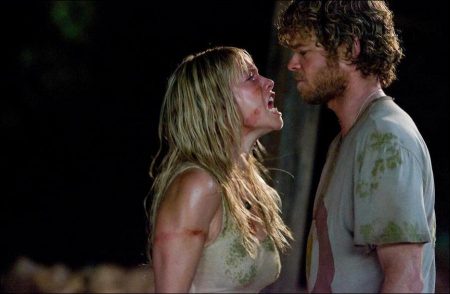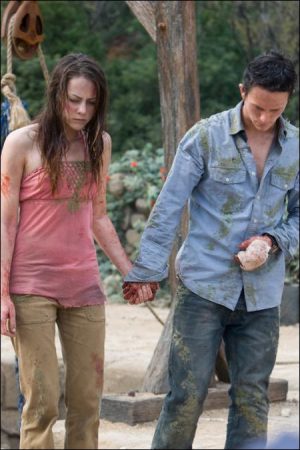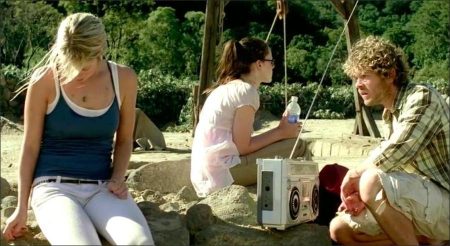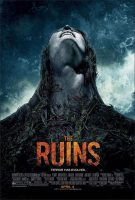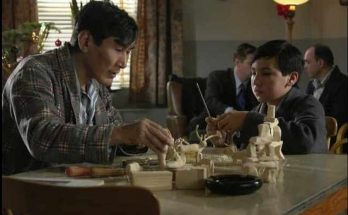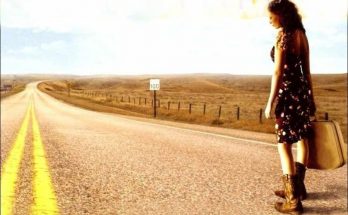The Ruins takes place in Cancun, Mexico, where gorgeously exotic beaches abut lushly tropical forests. Finding a seaside resort location with a nearby soundstage was relatively easy, but director Carter Smith had another approach in mind: shooting the film on two practical locations.
“I wanted to keep this as real as possible,” Smith says. “I just think it’s better for the actors and for the material, because if you’re working with a heightened premise, you want to keep everything else as grounded as possible. Beyond that, natural sunlight is the rawest, most beautiful, most realistic light you can have, and I knew that would work beautifully for the look we were trying to achieve. So to my way of thinking there was no way we could shoot this film on a soundstage.”
Hofmann set about finding a location that reinforced the strong relationship between the coast and jungle, allowed her to access an experienced crew, and would still enable the film to stay within its budget. “With those mandates in mind, there was no better place to shoot than Queensland, Australia,” claims Hofmann. “Early on, DreamWorks had started a conversation with the Pacific Film and Television Commission in Queensland and I took over from there.
Obviously, since so many films are shot in Queensland, Australia, we knew we’d be able to assemble a fantastic crew. We also had the Warner Roadshow Movie World Studios nearby to all our exterior locations, which was important, because even though Carter wanted to shoot in natural settings as much as possible, there were some areas of the script that necessitated using a soundstage. So we had everything there – the coast, the jungle and rainforests and the studio – in a tight little circle. That made the decision to film in Australia a very easy one.”
The story required three primary locations, explains Bender. “After our cast leaves the hotel and finds the ruins, they’re confronted by some local Mayans. Because they don’t speak the indigenous language, they are at a loss to what they’ve done to anger these people. So, after Mathias’ friend, Dimitri, gets shot, they figure they’re better off staying at the top of the dig.”
The three primary locations were an opening by the jungle where the pyramid base could be built that provided enough room for riders on horseback to maneuver, the top of the ruins with views of the surrounding jungle, and the ruins’ dark interior ceremonial chamber. “The ceremonial chamber would be built on a stage. Once we started scouting for exterior locations, however, there was some difficulty,” Bender says. “Some areas had perfect tree lines, some had great views, so we ended up creating two distinct locations. There’s the base of the hill set where everyone comes out of the jungle, and another set for the top of the hill. Both sets are really amazing. Our production designer Grant Major did an incredible job with all the rocks and vines, so when we attach the locations digitally, it will be so seamless and perfect that the audience will never realize.”
The film was shot primarily on Mount Tamborine and on private land near the Natural Arch in Springbrook National Park, both on the continent’s Gold Coast. While there was certainly a great deal of work involved building sets and delivering crews to these slightly remote locals, Smith’s decision to shoot outside was a big bonus for the cast. “Working on any practical set is far better than working on a stage with a green screen,” says Shawn Ashmore, who plays fun-loving Eric and has had experience with special effects in the “X-Men” movies. “On real locations you can see the sky, you can feel the wind and the sun beating down on you. This story has a lot of natural elements. It’s all about sweating, feeling that heat, and knowing you’re not able to access water when you’re thirsty. Having these sensations for real was a great help in transporting us into the scene.”
The only downside was that the production wasn’t actually shooting during the summer. “It was wonderful coming to work, being outside in the fresh air and seeing these beautiful sunsets, but it was freezing cold!” laughs Laura Ramsey, who portrays Stacy. “It was supposed to be a hot summer so they have us in these little tank tops and they’d spritz us with olive oil for sweat, which was a little uncomfortable sometimes. But I’d rather be outside in that beautiful environment and have them spritz me while I’m freezing than be in a dusty studio where you’re always looking at a green screen and trying to imagine you’re in a jungle.”
Being outside was a plus for the actors and for Smith as well, because it helped generate some of the suspense he needed for a film that transpires largely under a blazing, unforgiving sun. “When you’re watching the film, you’re constantly aware of the sun setting, because you sense that, when it does, something bad is probably going to happen,” he says. “At the same time, because we were shooting in actual daylight, it meant our hours were limited. There’s something so pressing about the fact that the sun is slipping behind the mountain. It forces you to work at a rapid pace and make quick decisions so you get everything you need. I almost think that if we didn’t sometimes have that pressure, we might not have been as productive and gotten those truly perfect, really tense shots. Being outside put everyone at the top of their game, and the crew always came through so that the actors could do their jobs.”
Smith acknowledges that in some ways it might have been easier to shoot everything on a soundstage, but he is glad he had the opportunity to work outdoors because it better served the script. “This movie isn’t just about creeping vines, this is about the psychology of these five people and what they go through in really extreme circumstances. I needed to make this as real for them as possible and I think the results are up there on the screen.”
The Vines and Visual Effects
With cast and locations locked down, focus was placed on the movie’s most difficult component: the deadly vines.
“My initial reaction was, oh gosh, how are we gonna do this?” laughs director Smith. “I mean, a killer vine in a book is one thing, but film audiences are more likely to question and challenge that.” Smith and the producers knew they needed a top-notch team to bring their unnatural antagonist to life, so they hired famed creature designer Patrick Tatopoulos, whose credits include “I Am Legend” and “10,000 B.C.”; production designer Grant Major, who won numerous awards including an Oscar for his work on “The Lord of the Rings” trilogy; and visual effects supervisor Greg McMurry, whose most recent credits were the blockbuster “Fantastic Four: Rise Of The Silver Surfer” and “Death Sentence.”
Rather than expend onscreen exposition to provide contrived explanations of how the vines came to be, Smith decided to keep their origins a mystery and focus on slipping in clues that would make audiences hypothesize on their own. “We came up with a version of this vine that is based very much in the real world,” Smith says. “Everything the vine does is something real plants do in one form or another. We asked ourselves, where does it get its nutrients? How do the locals keep it from spreading out? What does it do with the bodies once the flesh is consumed? All those questions helped us wrap our heads around the `creature’ so we could move forward. Our main job became figuring out how the vine looks, sounds, and moves.”
Using Tatopoulos’ designs, Major called in Gary Cameron to sculpt, cast the molds and produce these seemingly delicate vines, leaves and flowers. “We looked at lots and lots of plants trying to work out the movement and how it would work in real life if someone walked by or touched them,” Cameron explains. “We ended up using pumpkin vines as a basis of how it would actually grow and crawl along.”
For the “hero” vines – the ones the audience sees in close-up – Major set up a 12-person workshop to produce the entire plant. From the casting, painting and assembling of each leaf or flower to the tendrils, it was all done by hand. “It was a very labor-intensive exercise, but well worth it in the end,” says Major.
“Not only do the vines look really great but they really helped with our performances,” says Joe Anderson, who portrays Mathias, the German traveller who brings the four Americans to the Mayan ruins. “They complete this three-dimensional space, making it look real, feel real. There are hairs on the plants and little barbs-they didn’t really hurt but when you felt them, it really got you into the moment. The first major thing that happens to me is that I start digging through the vines, get these cuts and the sap burns my hands. There’s always a question of how big to play your reaction to this, but when you’re on a set that looks and feels so real, you somehow know instinctively what to do – which helps to create a mounting tension, so that when my legs get broken and the vines start invading my body, the reaction becomes really big, really intense.”
The job of actually making the vines move fell to visual effects supervisor Gregory L. McMurry, ASC. “Originally there was talk of creating a puppet for certain moments, but we ended up moving away from that idea, opting instead for digital animation,” he explains. “The first part of the story is the group’s isolation on top of the hill; then the vines start intruding on them. You don’t want to start out with the tendrils moving all around because that would ruin the element of surprise. So instead, you make people wonder what’s happening and start to anticipate the bigger attack they know will inevitably come. Visually, the leaves look like normal set dressing. Then the kids realize the plants have a texture to them. Then we start seeing them move when the characters aren’t looking, but it’s not clear if that’s being caused by the wind or some other logical reason. It’s only when Stacy is lowered into the ruin that we suspect they’re moving of their own accord, but because it’s been so gradual that up to that point, the audience is strapped in and ready for the thrill ride.”
The Prosthetics
Just as director Smith insisted that the `The Ruins’ would benefit from being shot on a practical location rather than a soundstage, so too did he favor prosthetics over CGI animation for the film’s more graphic scenes. The reason he explains is that, “a majority of the gruesome moments in this movie happen outdoors in broad daylight. Everything is exposed, and unlike traditional horror movies, that means you can’t trick things as much by using shadow and light. If we’d just relied on animation, it would have felt distant, and this film is truly all about the audience viscerally connecting with what’s happening onscreen.”
That task was handed to special effects prosthetics designer Jason Baird, who called “The Ruins” a dream come true: “It was so much fun! There were so many cool make-up effects.” For Baird, there were three key moments in the film. One involved a woman with vines running through her body, while another dealt with Stacy’s insanely desperate attempt to remove the vines from her body by cutting into her own flesh with a knife. But of all these moments, the biggest challenge involved Mathias, who breaks his legs in a fall and then wakes up to discover that the vines have eaten away much of his flesh from his knees down.
“It’s just ragged meat and bones,” Baird says. “The legs end up being amputated with a rock, and all the excess flesh is hacked at and cut away with a small knife, and blood jets everywhere. So we had to produce a realistic puppet from the legs down.”
“The prosthetics were extraordinary,” says Anderson, who spent hours sitting in a hole while attached to a fake lower body. “They were made from molds of my stomach and legs, so I’d look down and see these bizarre limbs that were the right length, had the right color hairs, the right skin, everything.” This helped with Anderson’s performance, because unlike having his body covered in a tinted body stocking and then digitally replaced in post-production, he could physically see himself being abused right before his own eyes. “I actually got `phantom limb syndrome,’ where I would be looking at my prosthetic foot and really trying to move it,” he says. “So you know that if it’s affecting me that way then I’m going to do good work.”
Malone says she’ll probably have nightmares about the prosthetics for the rest of her life: “Particularly the scene where Mathias has his legs amputated. This gelatinous bone material was pumping out so much blood and it smelled terrible! I knew in my head it was all fake but I started to get a little nauseous, and for an actor in the middle of a scene that’s a luxury. It really was amazing to work with such incredible prosthetics people.”
Ten sets of legs, primarily made of silicone, were used to achieve this one effect. But what surprised Baird was that the dirtier and bloodier the legs became from usage, the better and more realistic they looked.“We did a lot of research and autopsy reference,” he says. “We got real lumps of raw meat and watched how it moved and sagged and hit the ground. Then we mixed and matched various chemicals, silicones and foams until they mimicked the real thing.”
Comments executive producer Trish Hofmann: “You can tell how much Jason loves his job. When he first came to show us the legs on set, they were hidden in his trunk-two bloody stumps in the back of his car. We were definitely impressed by how they looked – and sincerely hoped he wouldn’t get pulled over by the police.”
Production Design and Cinematography
“The story starts in a fairly idyllic way,” says production designer Grant Major. “It’s coastal and loaded with color – blue sky, yellow sun, creamy, sandy beach. That was all reflected in the design of the film’s first sequence. Then this journey moves into the forest that’s not all beautiful. It’s dirty and the light gets darker, dingier. Finally, the characters end up on the Mayan hill and even though they’re outside, or in some cases inside the burial chamber, it’s all about creating a sense of isolation and claustrophobia.”
Adds Smith, “When you put all that together, it helps create a dark mood. The audience might not realize what’s going on, but if it’s all done right then they’ll definitely feel it.”
As with all his other projects, Major researched the period and cultural details in his creation of the Mayan ruins. “This film is set in Mexico, so the touristy areas were easy to recreate,” he says. “The Mayan environment on the Yucatan Peninsula required a lot more research and work. There are certainly Mayan pyramids we could have visited, which are historical monuments, but it’s not as though we could just show up with a crew and take over for weeks at a time to study them in detail and then make the film. We needed to be able to put gear on it and move items around, so the only way to achieve that was to build our own pyramid.
“We researched various pyramid styles from the Mayan culture and then textural rock patterns from other areas,” Major continues. “Then it all had to be adapted to the drama that takes place on top of the pyramid. It all had to be designed around that dynamic. Ultimately, it took us about seven weeks to build the top and bottom parts of the pyramid, which was pretty fast for such a big build. Thankfully, I had a great team.”
Tying all the looks together was director of photography Darius Khondji, ASC, A.F.C., who had previously worked with Smith. “I was laughing with Carter because he’s also a photographer, and you usually try to take care of actors and actresses to make them look beautiful. But on this film we decided to change that.”
Smith and Khondji discussed how the beginning of the film would be attractive because the mood was fun and it’s sexy. But then, little by little, it all shifts. “We started with a soft light and a mosaic of colors and then started scratching them a bit and getting much harsher with the light. I wanted to find a really gritty look, even with the characters themselves, so they would kind of become a reflection of their circumstances and look raw, ugly. I also used much more physical camera work than I’ve done before so that things would feel slightly chaotic and just slightly out of everyone’s control.”
While Smith acknowledges that “The Ruins” is a rough movie containing both obvious and subtly disturbing elements, he points out that “Horror movies are one of the only genres in which audiences experience a very physical, visceral reaction to what they are seeing on screen. People enjoy yelling and screaming and sinking into their seats or glancing away from a moment that’s particularly uncomfortable. All that’s great. There are very few types of films where you get that physical response. So for me the best way to give the audience that release was to establish a very real world with very real characters, tease them with tension, then show glimpses of the most realistic horror I could produce. And if all that aligns and the audience experiences a physical reaction toward the film, then I think we achieved our goal.”
The Ruins (2008)
Directed by: Carter Smith
Starring: Jonathan Tucker, Jena Malone, Shawn Ashmore, Laura Ramsey, Joe Anderson, Pauline Whyman, Michelle Atkinson, Jesse Ramirez, Sergio Calderón, Luis Antonio Ramos, Karen Strassman
Screenplay by: Scott B. Smith
Production Design by: Grant Major
Cinematography by: Darius Khondji
Film Editing by: Jeff Betancourt
Costume Design by: Lizzy Gardiner
Art Direction by: Brian Edmonds, Michelle McGahey, John Wingrove
Music by: Graeme Revell
MPAA Rating: R for Strong violence and gruesome images, language, some sexuality and nudity.
Distributed by: DreamWorks Pictures
Release Date: April 4, 2008
Views: 92
